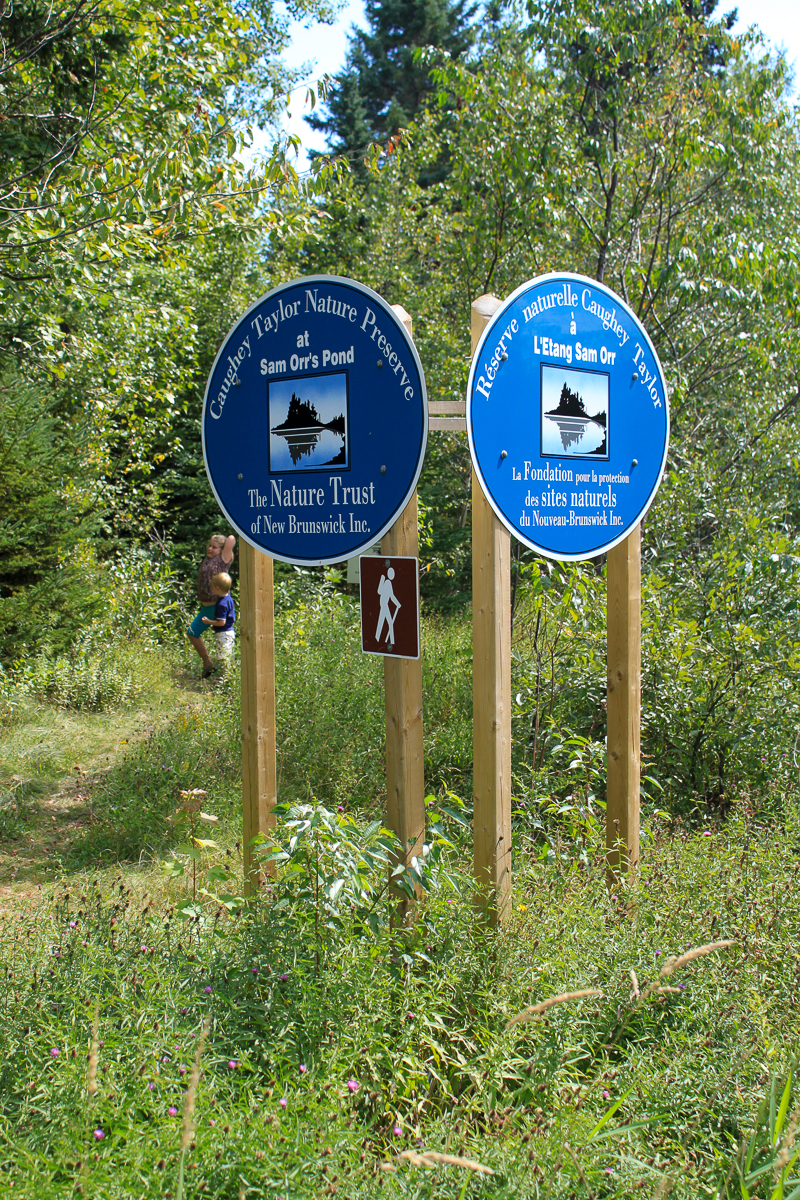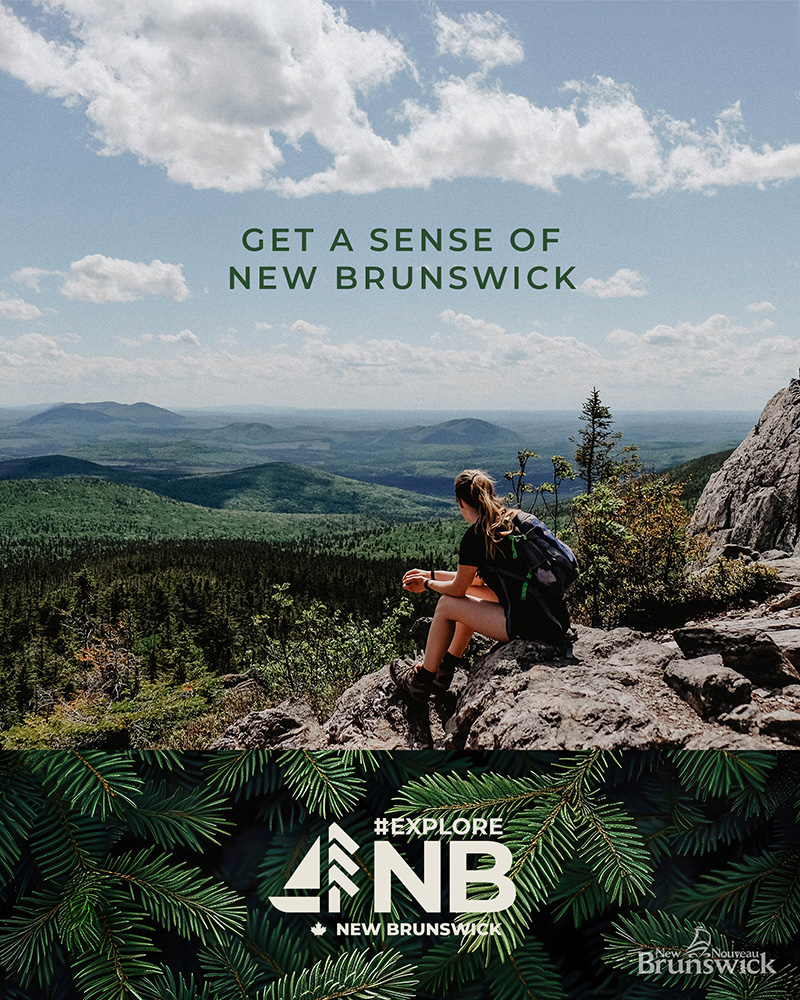Sam Orr Pond Trail
Quick Facts
| Difficulty | moderate |
| Trail Type | loop |
| Distance | 2.4 km |
| Estimated Time | 1 hr 30 mins |
| Surface Type | forested |
| Elevation Change | 42 meters |
| Features | tidal pond, cliffs |
| Trail Markers | white paint |
| Scenery Rating | beautiful |
| Maintenance Rating | well maintained |
| Cell Reception | strong |
| Dog Friendly | yes |
| Fees | none |
Directions
For directions to the preserve go to the Caughey-Taylor Nature Preserve page.
From the parking lot cross the road and you will see the entrance to the Sam Orr Pond Trail to the right. The trail is marked by a round blue sign.

Be careful crossing the road. Traffic can be heavy in the summer months and the long turn reduces visibility.
Map
Description
Note: The start of this trail has become infested with red ants. It's ossible to get around with the right footwear but may not be the best place to take a dog unless you can carry them past this section. Climbing Chickahominy Mountain on the other side of the road would be a better option.
The trail begins by descending through a mixedwood forest towards Sam Orr Pond. Just before the pond you will come to a trail junction. Turning right will take you to an arch bridge over Taggart Brook and eventually to the shores of Sam Orr Pond.

Turn left at the junction and you will circle around the pond, first coming to some cliffs, then climbing up on some granite bluffs that overlook the pond. Continue past the bluffs and the trails descends to the shore of Sam Orr Pond. If it's low tide you can cross here and return to the junction by making a full loop of the pond. If its high tide the water will be too deep to cross and you will need to return the way you came.
From the Sign
Sam Orr's Pond
Through the trees before you lies Sam Orr's Pond. This Pond is an unusual marine environment because of its mix of salt and fresh water. Several streams feed fresh water into the pond, while at high tide salt water spills over the natural rock sills that partially dam the pond at its southern end.
The result is the pond contains relatively warm water with low salinity compared to the surrounding ocean. This quality makes Sam Orr's Pond a unique home for organisms not normally found in this area, including quahogs which are usually found in waters warmer than the Bay of Fundy.
From the Sign
Acadian Forest
Enjoy the beauty and diversity of our Acadian Forest. Here you'll find Eastern White Cedar groves and Balsam Fir thickets, as well as tall White Pine, Red Spruce and Tamarack. Yellow and White Birch, Red Maple and Trembling Aspen add colour in autumn to this diverse forest.
The Acadian Forest, with its unique mix of hardwood and softwood trees, is found only in the Maritimes and neighbouring Maine. Watch for Red Spruce; it's the Acadian Forest's signature species.
With time, this forest will become old growth forest. Did you know that lumberjacks used to cut White Pine trees that were over 3 feet in diameter right here in south-western New Brunswick? The White Pine and Red Spruce you see now are small compared to what they will become over the next few hundred years. Use your imagination and picture massive trees all around, towering high over your head.
From the Sign
Escarpment
After a gradual climb along the escarpment you are rewarded with a magmificent view of the pond and surrounding forest. These basaltic and rhyolitic bedrock formations offer natural viewing platforms (and are approximately 410 million years old... that's old!).
From the Sign
What's Special about Salt Marshes?
Salt Marshes, such as the marshes around Sam Orr's Pond, are among the most biologically productive ecosystems in the world. They provide shelter and feeding grounds for numerous birds, mammals and marine life. Numerous organisms prosper in the rich mud and marsh waters, where nutrients from land and sea come together to produce fertile growing conditions. In short, salt marshes are biological engines of our marine ecosystems, supporting life far beyond their boundaries.
Other Trails in the Preserve
Trail Last Hiked: December 1, 2014.
Page Last Updated: February 1, 2019.


